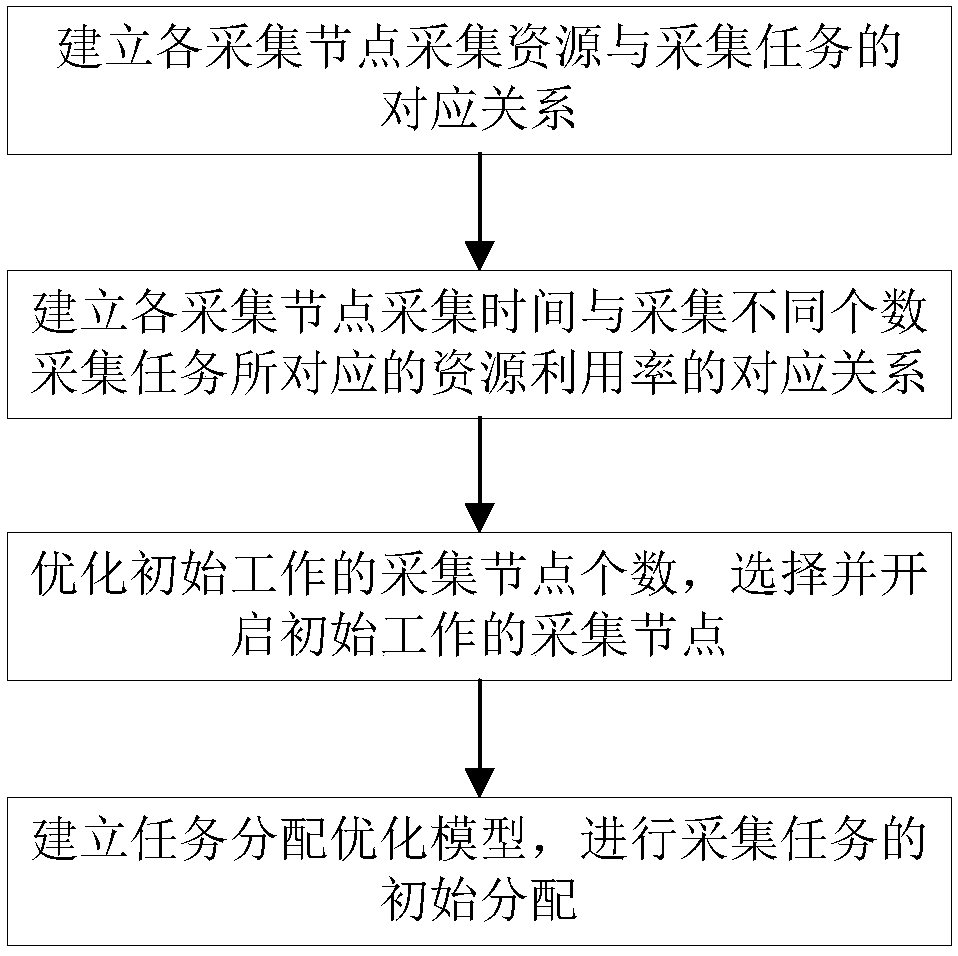Task allocation method for industrial distributed data collection system
A distributed data and acquisition system technology, applied in resource allocation, electrical digital data processing, program control design, etc., can solve the problems of waste of acquisition resources, inapplicable allocation scheme, and inability to achieve load balancing of acquisition nodes, etc.
- Summary
- Abstract
- Description
- Claims
- Application Information
AI Technical Summary
Problems solved by technology
Method used
Image
Examples
Embodiment Construction
[0050] Attached below figure 1 An embodiment of the present invention will be further described.
[0051] A task assignment method in an industrial distributed data acquisition system, comprising the following steps:
[0052] In the embodiment of the present invention, four collection nodes are set up, numbered 1, 2, 3, and 4. Set 36 initial collection tasks, corresponding to the data collection on the 36 wind turbines F1-F36. Among them, the data on the 12 wind turbines F11-F22 are important collection tasks and need to be backed up. Each collection task contains 404 collection data items, including 31 Single Float data, 52 Double Float data, 319 Boolean data, and 2 Unsigned Integer data.
[0053] Step 1. Establish the corresponding relationship between collection resources and collection tasks of each collection node
[0054] Step 1.1, individually assign collection tasks to each collection node, change the number of collection tasks, and measure the collection resource ...
PUM
 Login to View More
Login to View More Abstract
Description
Claims
Application Information
 Login to View More
Login to View More - R&D
- Intellectual Property
- Life Sciences
- Materials
- Tech Scout
- Unparalleled Data Quality
- Higher Quality Content
- 60% Fewer Hallucinations
Browse by: Latest US Patents, China's latest patents, Technical Efficacy Thesaurus, Application Domain, Technology Topic, Popular Technical Reports.
© 2025 PatSnap. All rights reserved.Legal|Privacy policy|Modern Slavery Act Transparency Statement|Sitemap|About US| Contact US: help@patsnap.com



